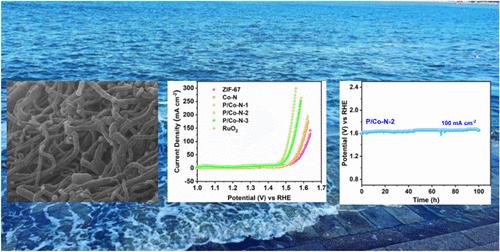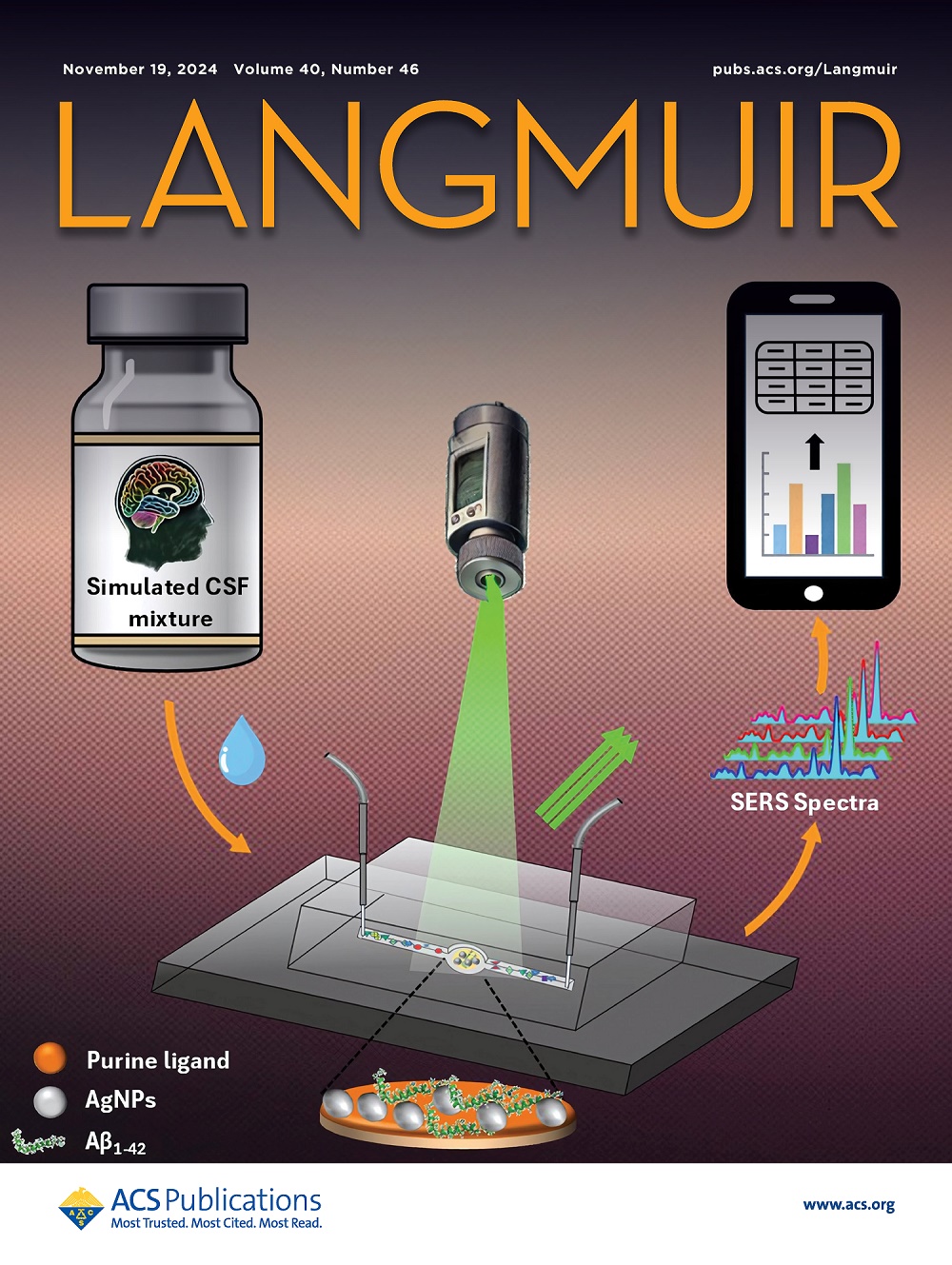Phosphorus Incorporation Increases the Oxygen Electrocatalytic Activity of Co–N Catalysts
IF 3.7
2区 化学
Q2 CHEMISTRY, MULTIDISCIPLINARY
引用次数: 0
Abstract
Transition metal and nitrogen codoped graphitic carbon materials with Co–N bonds serve as key non-noble-metal catalysts for the oxygen evolution reaction (OER). To enhance catalytic efficiency, we explore the anchoring of Co–N bonds on nitrogen-doped graphitic carbon (NC) substrates with varied phosphorus content. The catalyst is synthesized through a straightforward sintering and phosphating process of ZIF@DCA in a tube furnace. X-ray photoelectron spectroscopy (XPS) demonstrated that the Co–N bonds effectively formed an efficient charge transfer channel, removing the barrier that separated the Co–N active site from the work electrode surface. Phosphorus is uniformly distributed across the Co–N substrate, ensuring the exposure of most Co–N active sites during the electrochemical reaction. With favorable structural and electronic attributes, P/Co–N-2 showcases the lowest overpotentials at 10 and 300 mA cm–2, which are 200 and 300 mV, respectively. Additionally, it demonstrates stable performance over 100 h in 1 M KOH, outperforming other similar materials and RuO2. This study offers critical insights for the rational design of Co–N structures, exploring the interplay between structure, composition, and activity in electrochemical reactions.

磷掺杂提高了 Co-N 催化剂的氧电催化活性
本文章由计算机程序翻译,如有差异,请以英文原文为准。
求助全文
约1分钟内获得全文
求助全文
来源期刊

Langmuir
化学-材料科学:综合
CiteScore
6.50
自引率
10.30%
发文量
1464
审稿时长
2.1 months
期刊介绍:
Langmuir is an interdisciplinary journal publishing articles in the following subject categories:
Colloids: surfactants and self-assembly, dispersions, emulsions, foams
Interfaces: adsorption, reactions, films, forces
Biological Interfaces: biocolloids, biomolecular and biomimetic materials
Materials: nano- and mesostructured materials, polymers, gels, liquid crystals
Electrochemistry: interfacial charge transfer, charge transport, electrocatalysis, electrokinetic phenomena, bioelectrochemistry
Devices and Applications: sensors, fluidics, patterning, catalysis, photonic crystals
However, when high-impact, original work is submitted that does not fit within the above categories, decisions to accept or decline such papers will be based on one criteria: What Would Irving Do?
Langmuir ranks #2 in citations out of 136 journals in the category of Physical Chemistry with 113,157 total citations. The journal received an Impact Factor of 4.384*.
This journal is also indexed in the categories of Materials Science (ranked #1) and Multidisciplinary Chemistry (ranked #5).
 求助内容:
求助内容: 应助结果提醒方式:
应助结果提醒方式:


